From the Field
August 16:
Skye Haas reports from the Arizona: Second Spring 2024 tour
We just wrapped up our ever-popular annual southeast Arizona "Second Spring" tour, and by all accounts it was a fantastic success! Set during the monsoon rains of late summer...
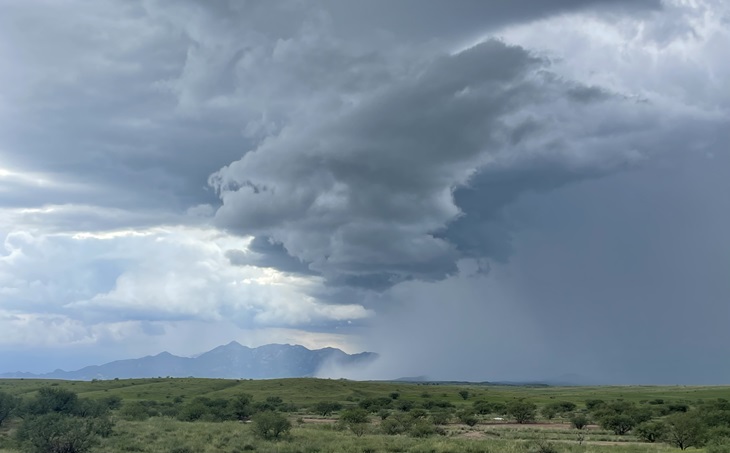
...this period is often thought of as a repeat of spring as the plentiful rains will make the arid browns turn green again....
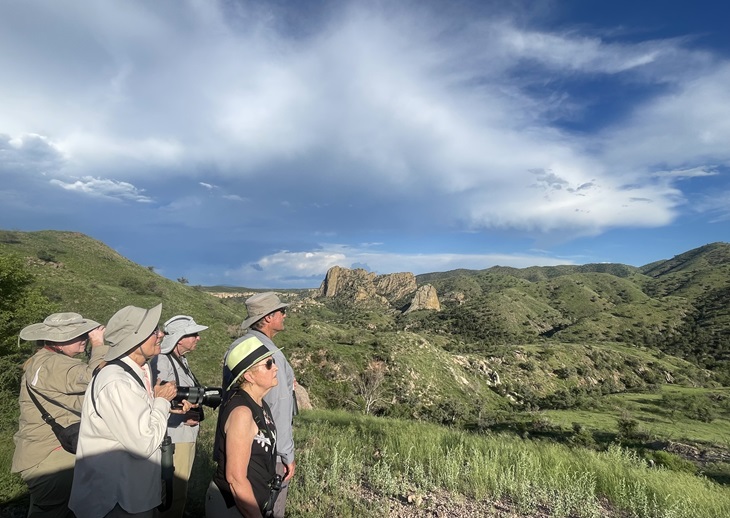
...with many plants blooming and several species delaying their breeding cycles to these life-enriching conditions.
We tallied in a great haul of birds with 183 species recorded with rarities like this Short-tailed Hawk:
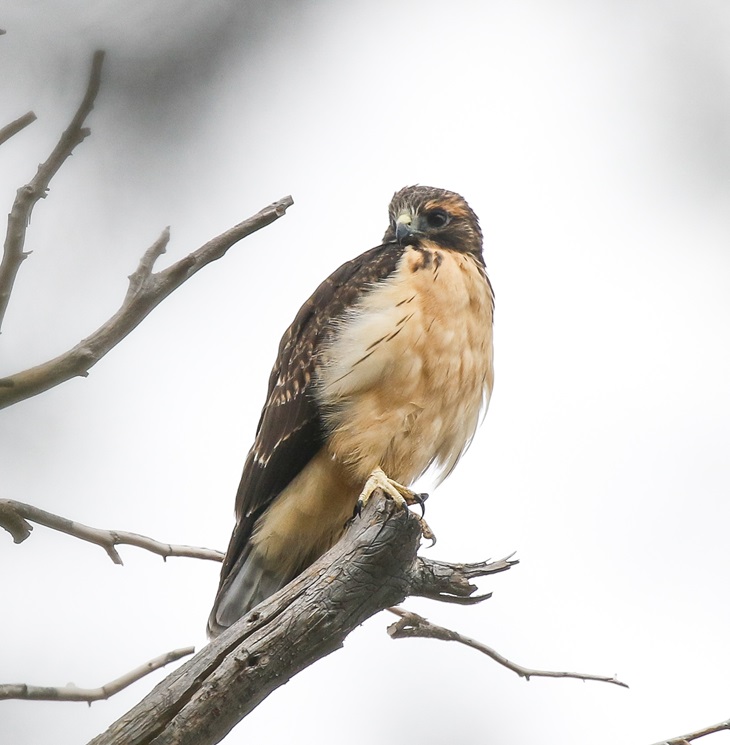
...and Rose-throated Becard, with a singing Five-striped Sparrow...
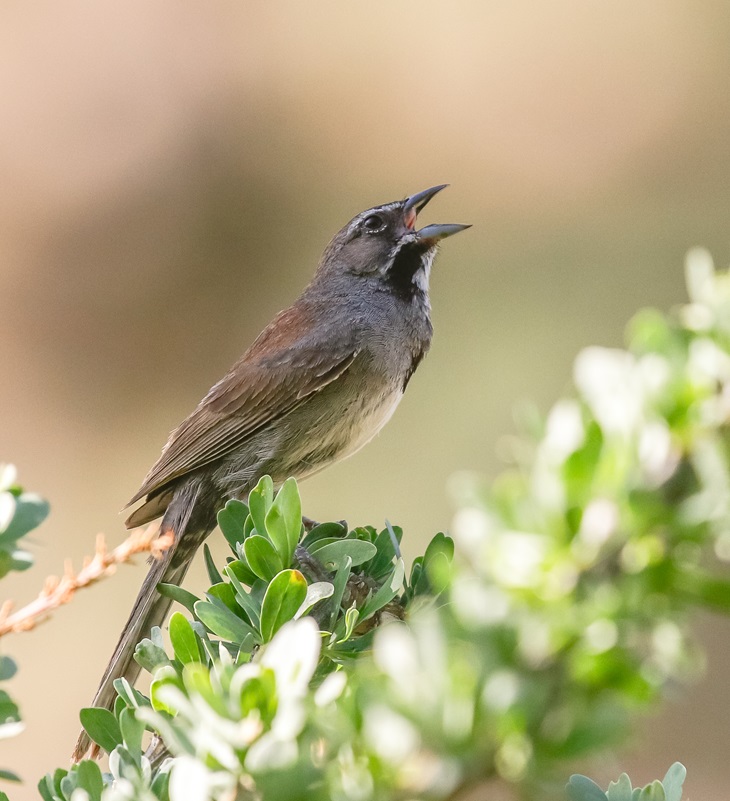
and Thick-billed Kingbird among many other expected SEAZ specialties like Red-faced Warbler, and excellent looks at three different Elegant Trogon...
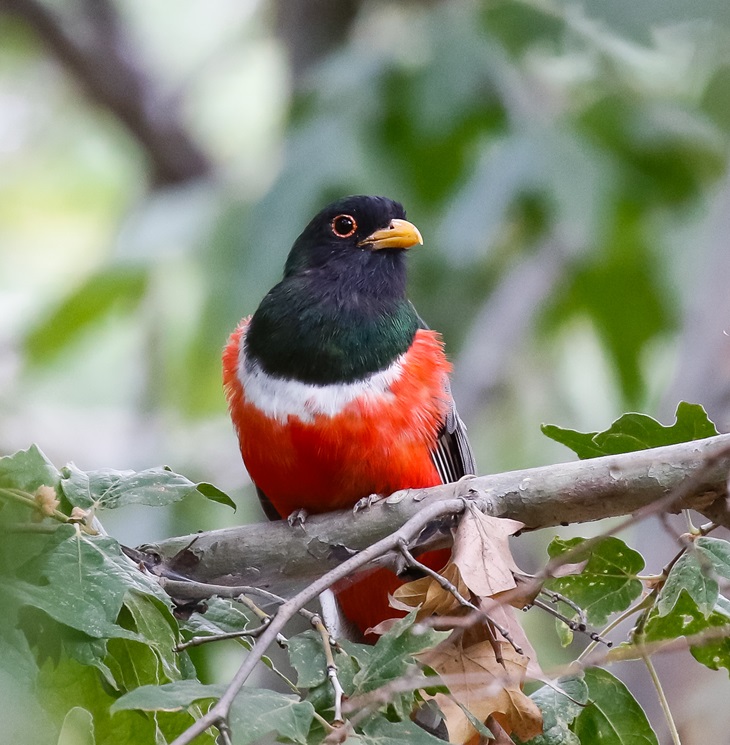
...the sought after Gray Hawk, Botteri's Sparrow, Varied Bunting, Sulfur-bellied Flycatcher and Painted Redstart.
Among the twelve species of hummingbird we saw, White-eared, Beryline and Lucifer were definite standouts!
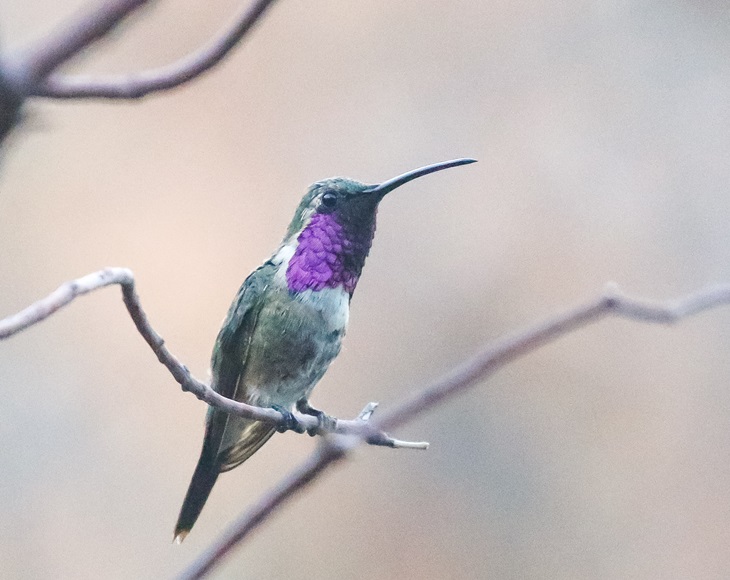
Fall migration was kicking into full swing while we were there as well, with flocks of Hermit Warblers and Western Wood-Pewees moving through the canyons, and 17 species of shorebirds observed along with migrant waterbirds like Cinnamon Teal, White-faced Ibis and Forster's & Black Terns.
A visit to this naturalist's paradise brings a wide array of plants and animals to enjoy from the blooming salvias and cactus; gorgeous insects like the Arizona Sister butterfly and the emerald-colored Glorious Scarab Beetle; to critters like White-nosed Coati and Merriman's Kangaroo Rat and the amazing diversity of herps such as Black-tailed Rattlesnake, Desert Kingsnake and the endangered Chiricahua Leopard Frog.
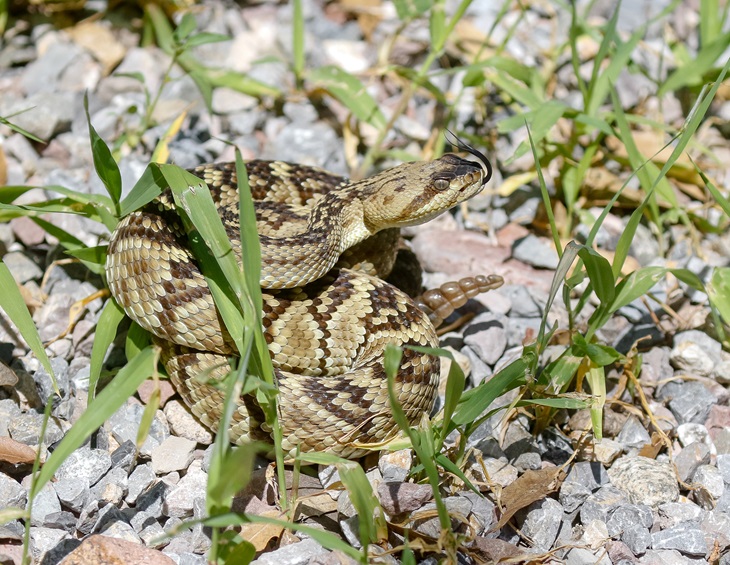
A full accounting of the birds recorded on this year's tour can be found here- https://ebird.org/tripreport/264770
August 6:
Rich Hoyer reports from his recently-finished Brazil tour
We can report that the Marvelous Mato Grosso tour was a smashing success this year. A super congenial group made it very enjoyable to appreciate the amazing biodiversity of this most amazing state in the heart of Brazil. There were many memorable highlights each day, so a couple photos from each of the regions we visited merely scratch the surface of what we got to see.

Perhaps one snag in the logistics early on was the six-month-old rockslide that still had the highway closed to our first nights’ lodge in the Chapada dos Guimarães. The detour added about two and a half hours to our drive each way, but it took us through some great habitat where on our last morning we witnessed an amazing congregation of three species of macaws feeding in a field next to the road, including about 250 Red-shouldered Macaws.

Trundling down the driveway to our lodge one afternoon was this Six-banded Armadillo, stopping in its tracks only when it sensed that our van might be something unusual in its planned route.
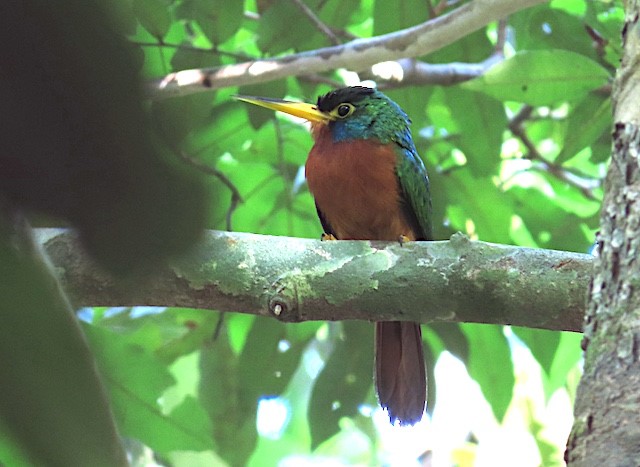
Our next adventure took us to the Amazon rainforest at Cristalino Lodge in the far north of the state, where in less than five days we tallied 268 species of birds, most of which we didn’t see anywhere else. Missed on most trips here but seen extraordinarily well this time was this stunning Blue-cheeked Jacamar.
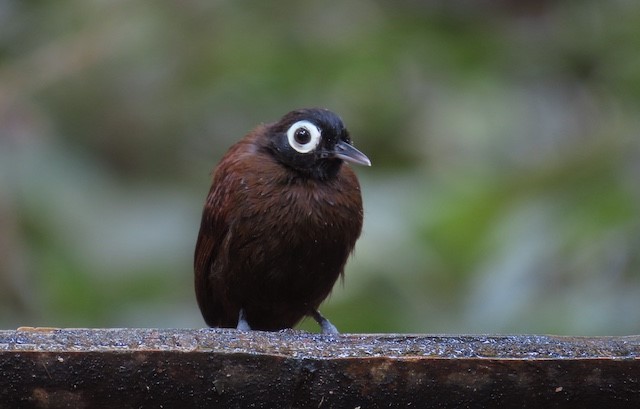
Antbirds are always tough, and we’d miss most of them if it weren’t for the amazing bird baths that the local boatmen and guides maintain not far from the lodge. The Bare-eyed Antbird is one of the most local specialties, and Cristalino must be the best single location for it.

After our time at Cristalino, we breathed a sigh of relief to be in the Pantanal where all the birds are easy to spot and don’t hide in dense vine tangles or tops of tall trees. No one had any trouble spotting the Hyacinth Macaws in the trees right by our rooms.
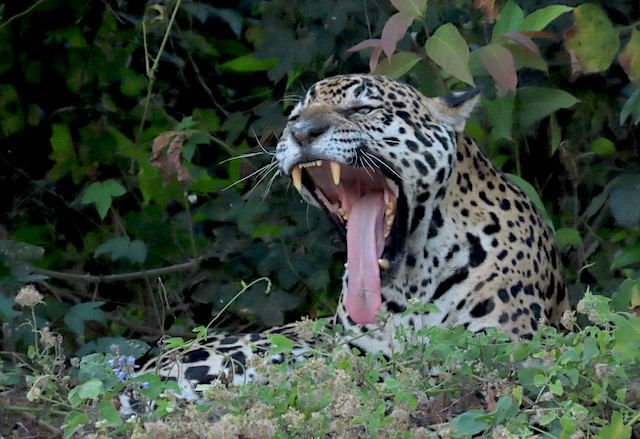
A huge part of our experience in the Pantanal is the search for Jaguars on the Cuiabá River. We spotted six gorgeous animals this year, including Ti (who we also saw on our 2023 tour), caught here mid-yawn, just having woken up before a morning of caiman hunting.
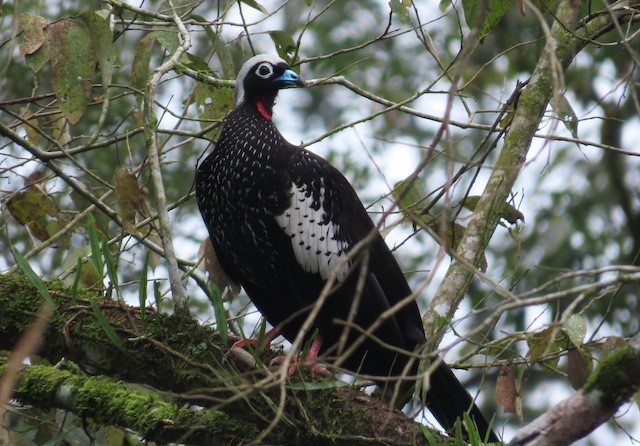
We finished the tour in the merely sub-tropical realm of Iguazú, where nearly every bird was new, butterflies abounded, and the falls astounded. Particularly memorable were the fantastic views of four endangered Black-fronted Piping-Guans one cool morning.
July 15:
Scott Olmstead reports from Costa Rica in July
We're not quite halfway through our trip, and the birding is going great! So far we've visited two of Costa Rica's most iconic destinations for birders – Savegre and Rancho Naturalista – and we've been treated to some real quality sightings of the specialty birds that people come to Costa Rica to see like Resplendent Quetzal, Snowcap, and Sunbittern. Next stop: La Selva Biological Station and the Caribbean lowlands.
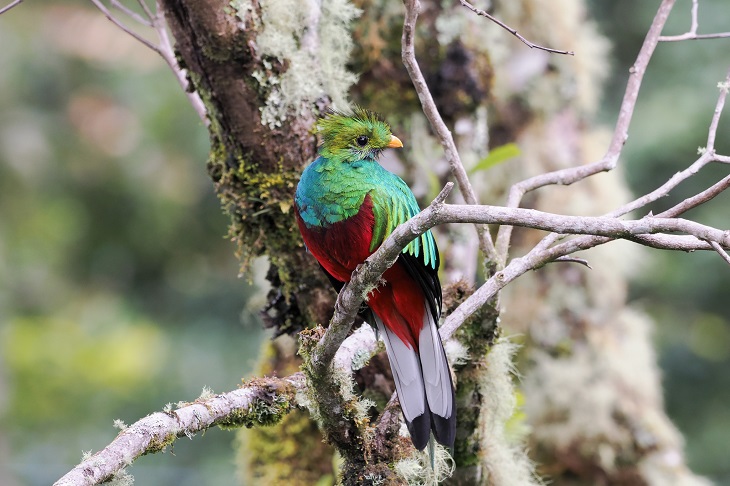
Resplendent Quetzal is perhaps the most famous bird in all of Central America – don't go home from Costa Rica without seeing one!
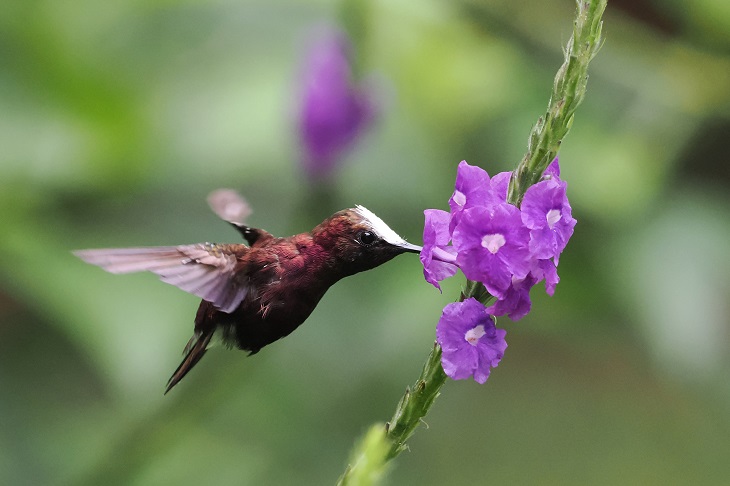
The Snowcap is one of Costa Rica's most unique hummingbirds, and it's been been feeding right around the garden at Rancho Naturalista.
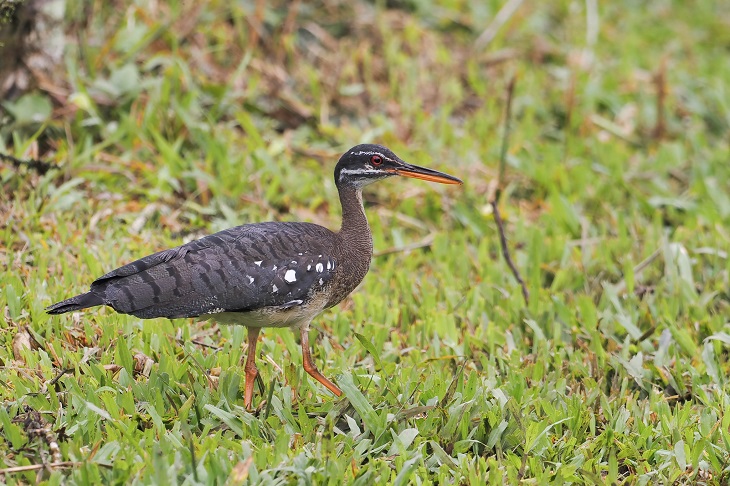
The strange Sunbittern gave us great views as it strolled along a country road near Rancho Naturalista.
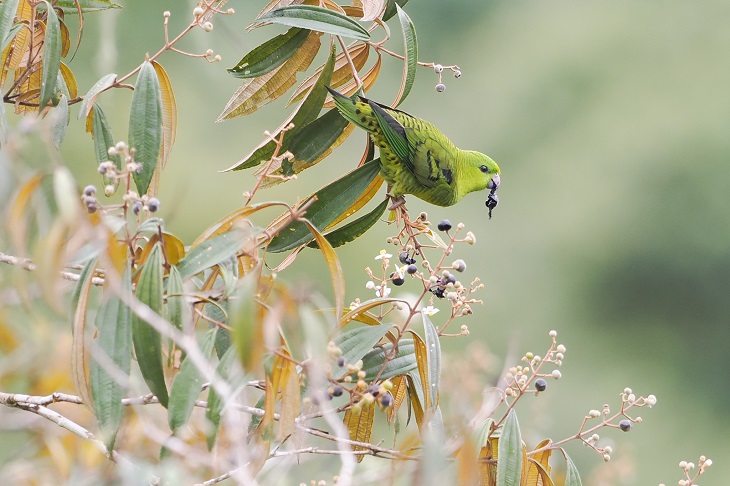
Barred Parakeets are often seen zooming overhead in tight flocks, but it’s not often you get a chance to observe them perched.

Watching Barred Parakeets feeding on tiny fruits.
July 12:
Fabrice Schmitt reports from Central Colombia
Our first Colombia: Central - The Eastern and Central Cordilleras and the Magdalena Valley tour has been absolutely fantastic!
Starting in Bogota, we had a first day in the Eastern cordillera, followed by some time in the Magdalena valley, and then by several days at various elevations and in different habitats in the Central cordillera, ending the tour at 13,500+ feet high in the beautiful paramo of Nevado del Ruiz.
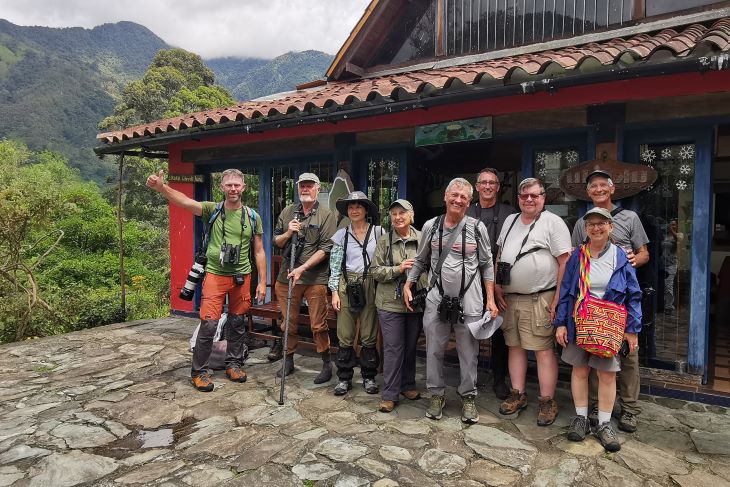
The happy group at Ukuku Lodge
It’s hard to pick the best birds of the trip amongst almost 350 wonderful species contacted in only nine days, but ‘Lunita’, the stunning Crescent-faced Antpitta coming to the worms at Hacienda El Bosque has been voted as best bird of the trip by the group!

‘Lunita’ the Crescent-faced Antpitta
Now, we also had a very cooperative Ocellated Tapaculo showing so well in the elfin Forest at Nevados del Ruiz, a beautiful male of Striolated Manakin that we could study for a long time in the scope at the Bellavista Reserve, a pair of Bogota Rail singing in the open at La Florida near Bogota, a prolonged view on a Rufescent Screech-Owl at Otun Quimbaya, and both Black-billed and Gray-breasted Toucanet coming to fruit feeders!

Black-billed Mountain-Toucan
In addition to these very memorable sightings, we also had fantastic views on Crested and Sooty Ant-Tanagers, White-throated Quail-Dove, White-mantled Barbet, Crimson-mantled Woodpecker, Grass-green Tanager, Torrent Ducks, Barred Fruiteater and so many more!
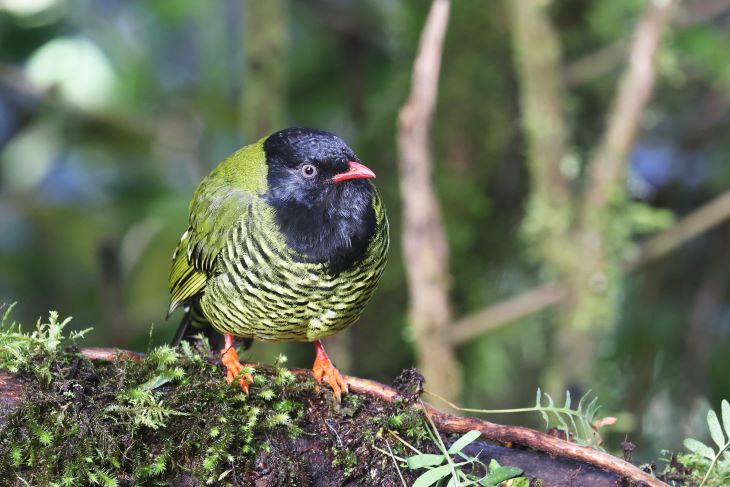
Barred Fruiteater
We also visited several hummingbird feeding stations and saw no less than 46 species of these fascinating birds!

Blue-throated Starfrontlet
Obviously, besides the incredible diversity of birds, we were amazed by the incredible diversity of flowers, orchids, butterflies, etc. Colombia is definitely THE biodiversity country!
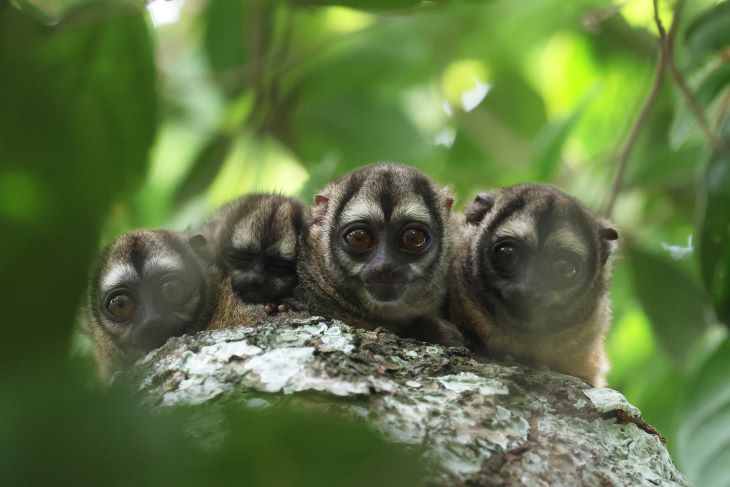
A family of Gray-legged Night-Monkeys
The eBird trip report can be seen here: https://ebird.org/tripreport/25748
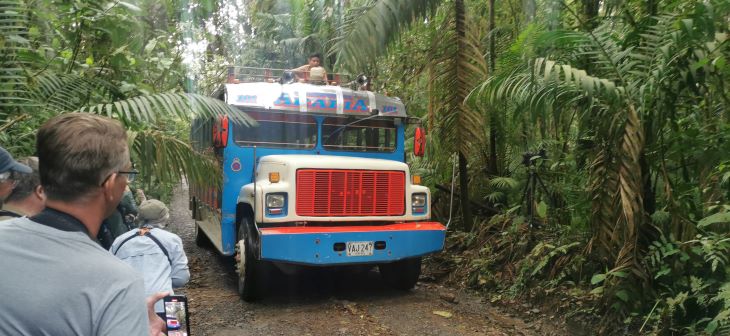
A ‘chiva’ (public transport) at Otun Quimbaya Sanctuary
July 2:
Skye Haas reports from the Arizona Owls & Warblers 2024 tour
The spring 2024 Arizona Owls & Warblers tour was a rolicking grand time through the always beautiful painted rock canyons of southern Arizona. It was a late spring to Arizona and we even discovered a patch of snow in the shaded dells of upper Mount Lemmon! These conditions made for a slightly different mix of species then the previous few years; certain breeders like hummingbirds and flycatchers were a little sparse in their typical haunts, yet northbound migrants were plentiful and there were even a few wintering species not normally still present by this date made for quite a diverse array of species for the trip list totals. We logged in 183 species of birds, with six species of owl, 11 species of hummingbird and 12 species of warbler observed. Highlights were too many to list in full, but some memorable sightings include Montezuma Quail, Lucifer, White-eared and Berylline Hummingbirds, Snowy Plovers, Common Black Hawk, a pair of Elf Owls at the nest, and Crested Caracaras (first ever for this tour!). Highlgihts for all on tour also included some of our easier to find species such as the stunning Red-faced Warbler:
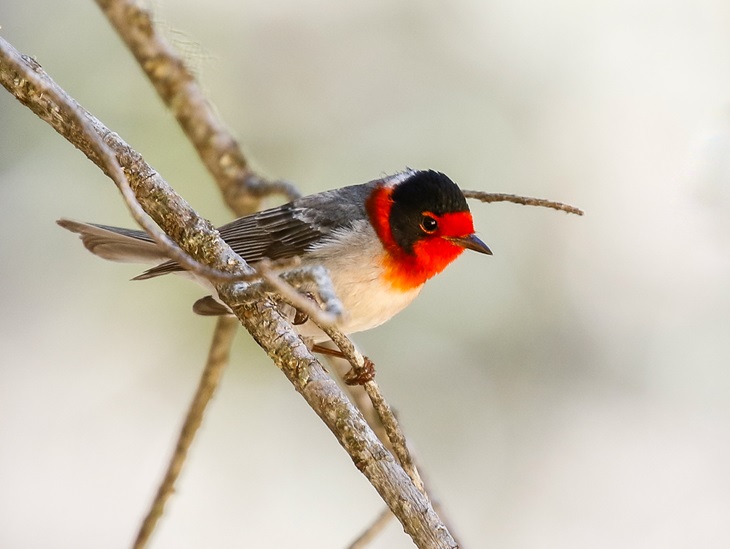
... and the Mexican Chickadee, found easily on this trip in the Chiricahuas.
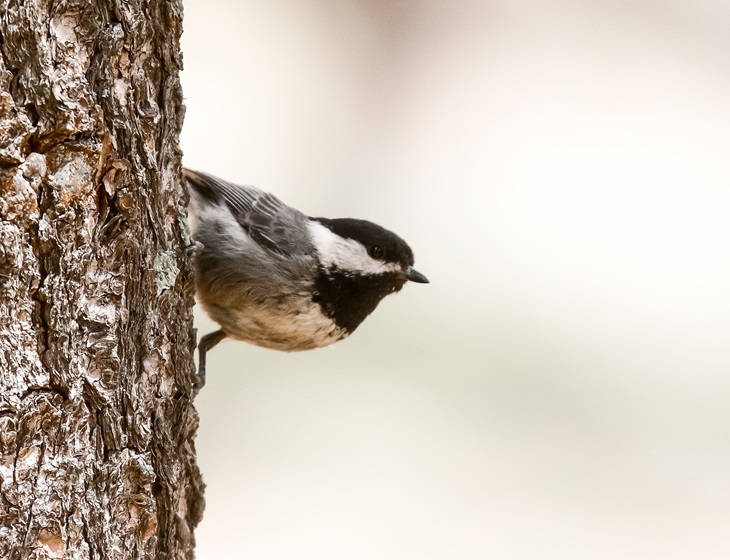
Our group was excited to find the more rare Berryline Hummingbird...
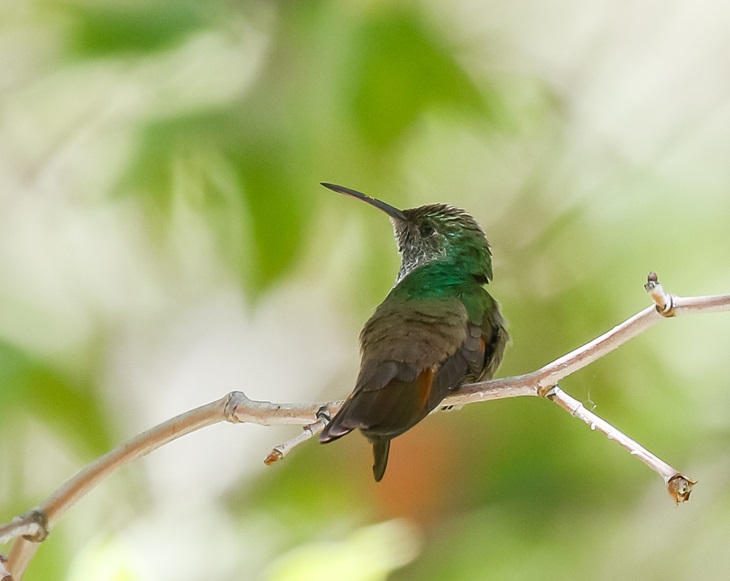
... and the Elegant Trogon, too!
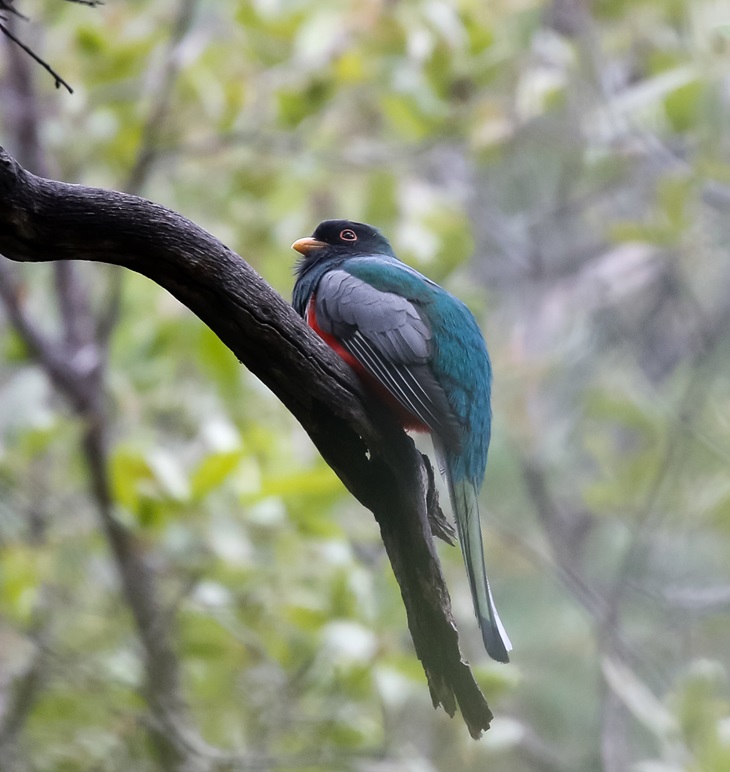
The Arizona Woodpecker is a specialty, with its soft brown coloring...
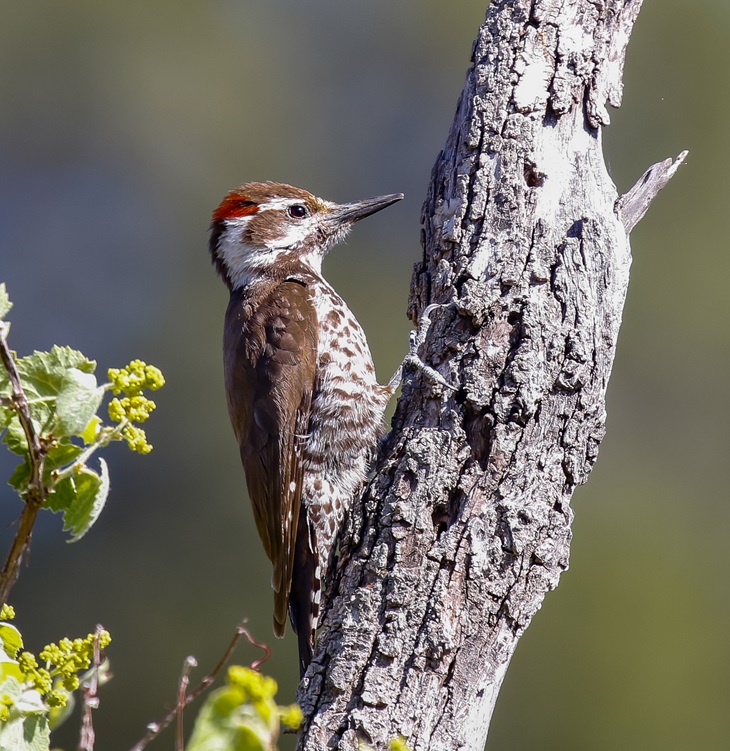
...and the Virginia's Warbler is sometimes difficult to get a good spot on, but we had great looks on this tour!
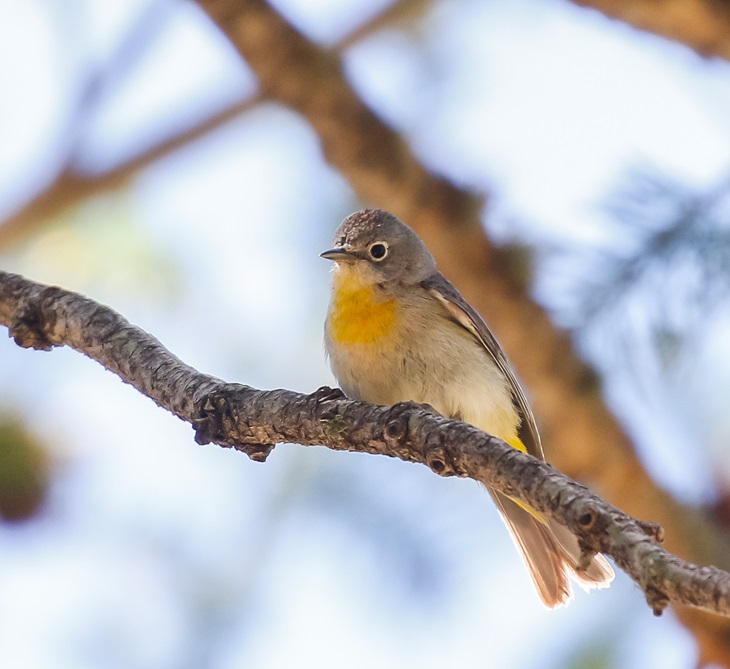
A Western Screech-Owl relaxing in its roost is always a sight to see:

June 26:
Steve Rooke reports from Central Asia
Even after leading 31 tours along the Silk Road, I never tire of the avian and cultural wonders it has to offer. The weather did its best to disrupt us this year, but we managed to see all the highlights. We ended the tour in the northern steppe where a group of 9 Sociable Plovers were a highlight, along with lots of White-winged and Black Larks. Before that we had watched Rufous-naped Tits in the Zammin mountains, Pander’s Ground Jays in the Kyzl-kum Desert, Asian Crimson-winged Finch and Pallas’s Sandgrouse coming to drink at a small spring, Meadow Buntings on a high pass, and White-browed Tit-Warbler and Ibisbill in the snow-capped Tien Shan mountains. Add to that the wondrous ancient history, and the ancient buildings and bustling bazaars of Samarkand and Bukhara and you can see why I am already looking forward to my next tour there.

Sociable Plover
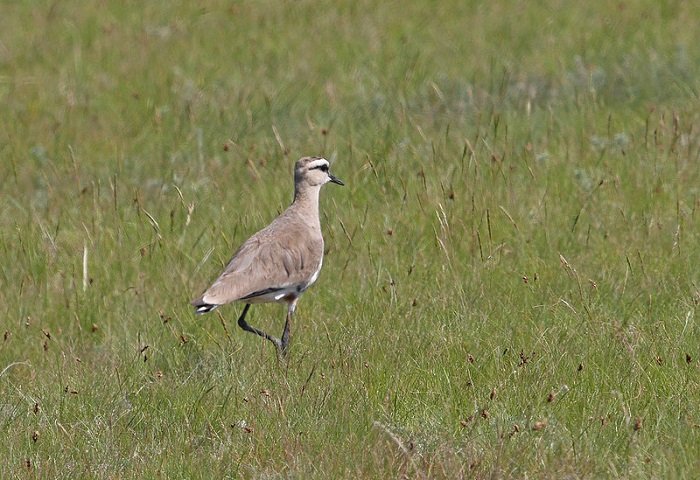
Pander's Ground Jay
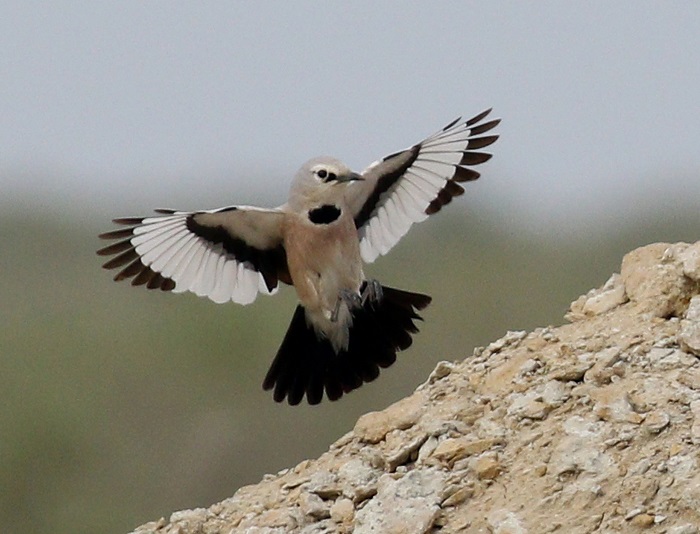
Asian Crimson-winged Finch
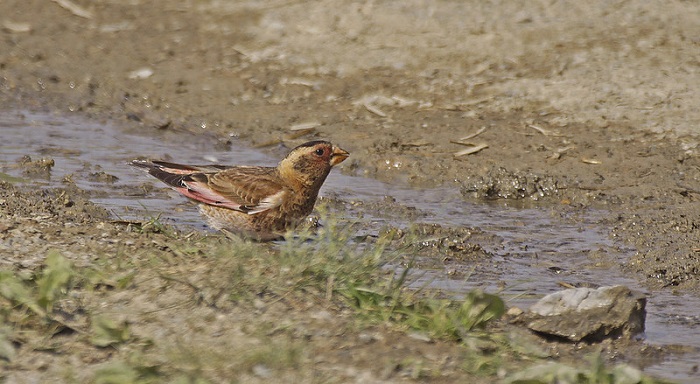
Pallas's Sandgrouse
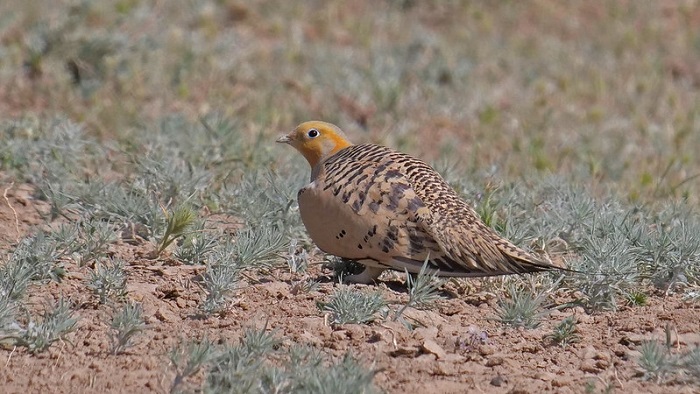
Meadow Bunting
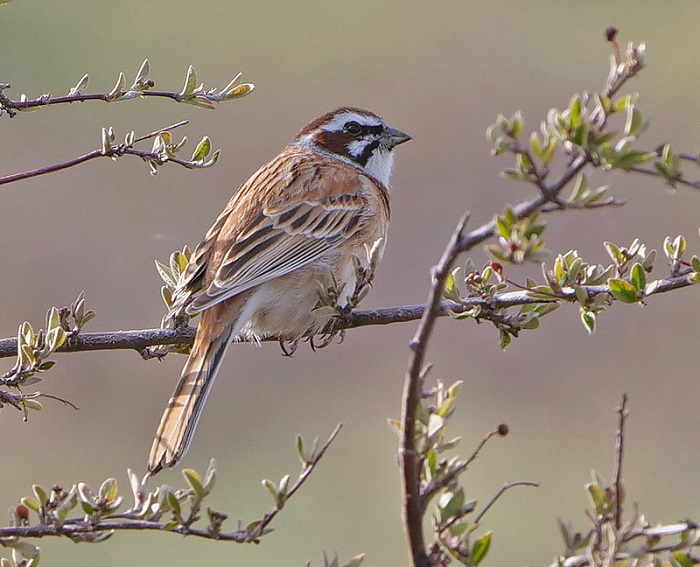
White-browed Tit-Warbler
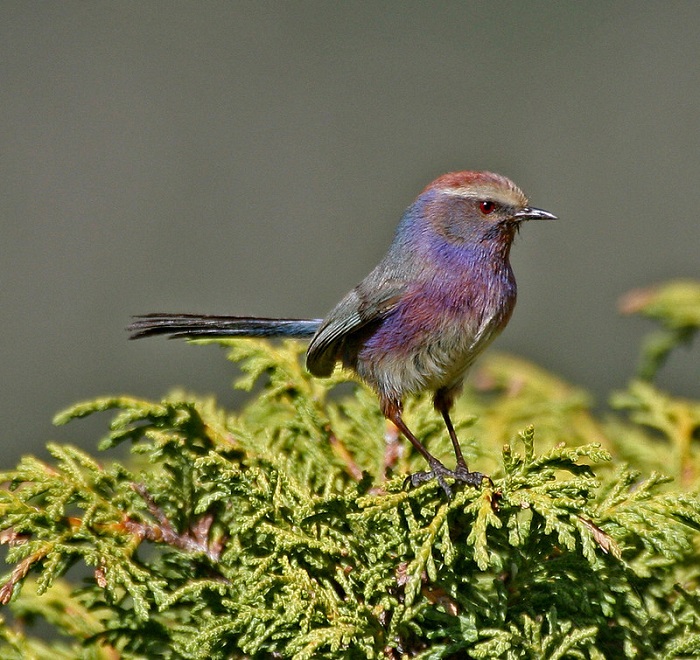
June 25:
Scott Olmstead reports from Ecuador
We’re just three full days into our tour but we’ve already seen an impressive variety of birds, including some scarce Chocó regional endemics, and highlighted by over 30 species of hummingbirds. So far we’ve been birding from temperate cloudforest down to the foothills, and today we head to the lowlands to turn up the diversity even more. Ecuador never ceases to amaze!
Sparkling Violetear
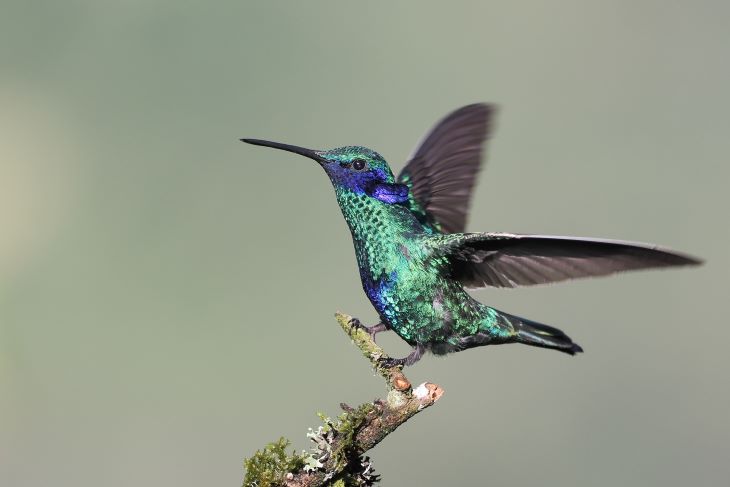
Rose-faced Parrot

Collared Aracari
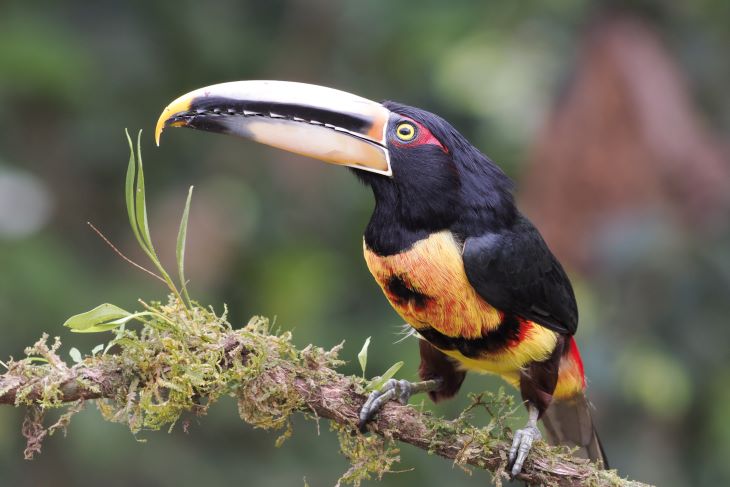
The group takes delight in our first sighting of the cute Ornate Flycatcher
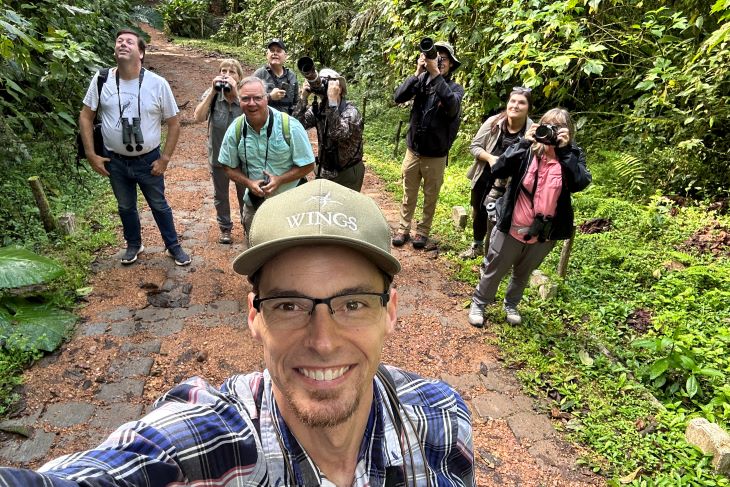
Ornate Flycatcher
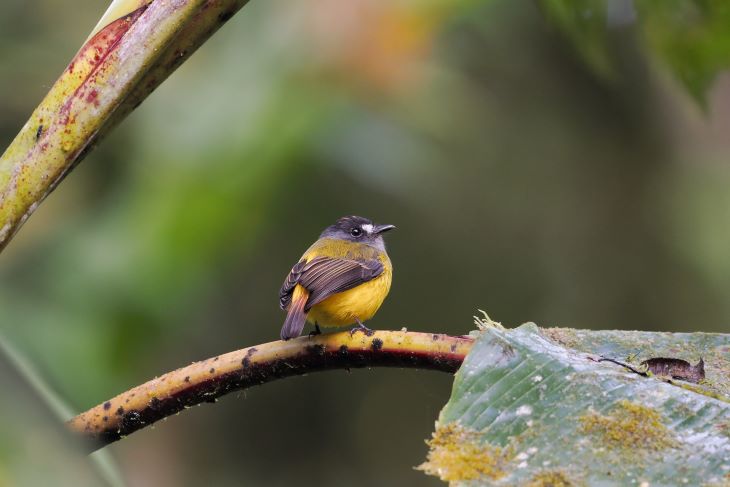
Birding outside Mindo
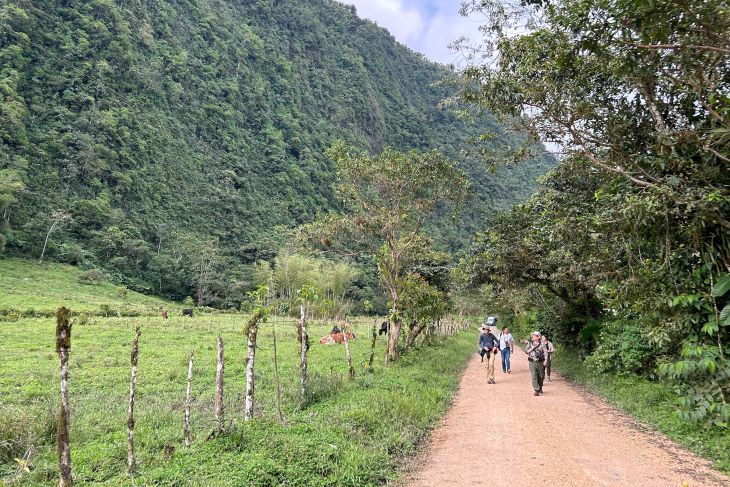
June 24:
Jake Mohlmann and Raymond Vanbuskirk report from Majesty Alaska
We just finished up an amazing trip through mainland Alaska tallying 178 species of birds and a plethora of other flora and fauna. Nome couldn’t have treated us better. The scenery here is unsurpassed and the rarity list is ever growing. Our first afternoon was highlighted by an eye-watering array of shorebirds at the Nome River Mouth, including at least 8 Red-necked Stints at a stone’s throw away.
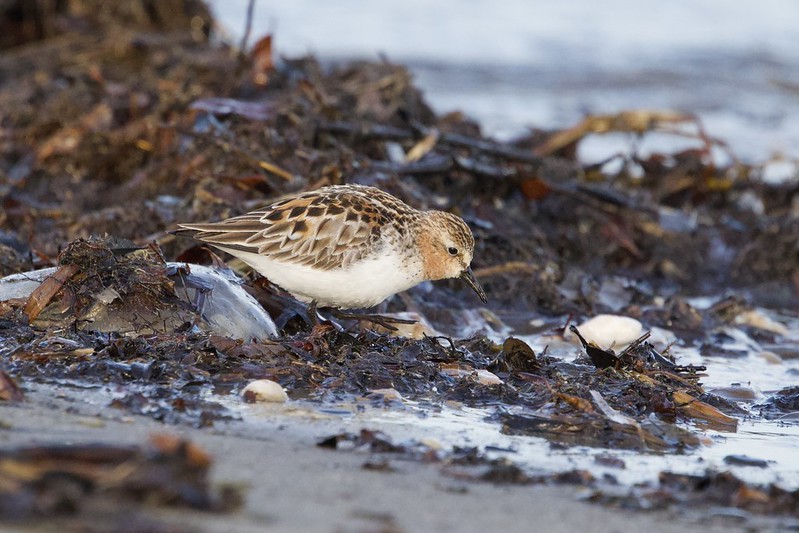
Red-necked Stint feeding in kelp line (photo Jake Mohlmann)
A late-night chase through the dense fog out to Safety Bridge had us walking along the coastline searching for a very rare species. Eventually a group of Surfbirds revealed a coveted Great Knot feeding amongst them. Nome is perhaps the best place to run into this Asian vagrant in North America.

One of these is not a Surfbird (photo Raymond VanBuskirk)
Raymond spotted a stunning breeding plumaged Curlew Sandpiper at the east end of Safety Sound that took our breath away. Yet another species new for our overall trip list, 1 of 6 write-in shorebird species.
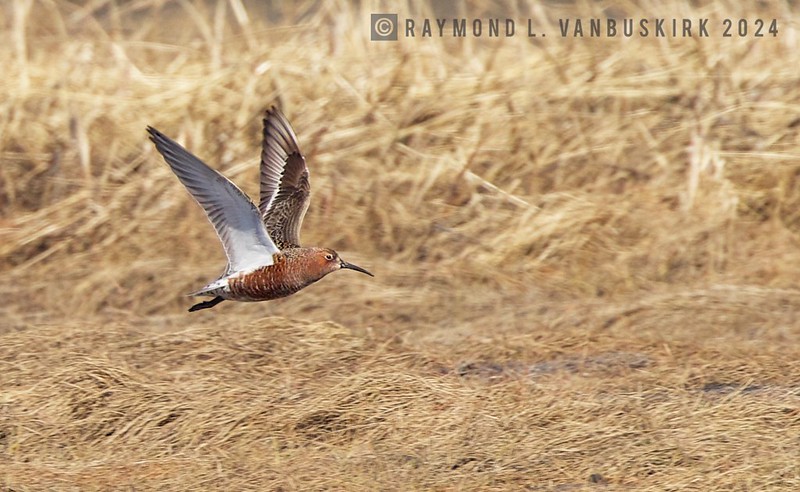
The self-found Curlew Sandpiper takes flight. (Photo Raymond VanBuskirk)
Our normal Nome Dome Roam to search for breeding Bristle-thighed Curlews was abbreviated this year. As soon as we stepped out of the vehicles a male curlew was whistling while displaying right over our heads! We trekked a little way up the trail to get and up close view of this range-restricted breeder.
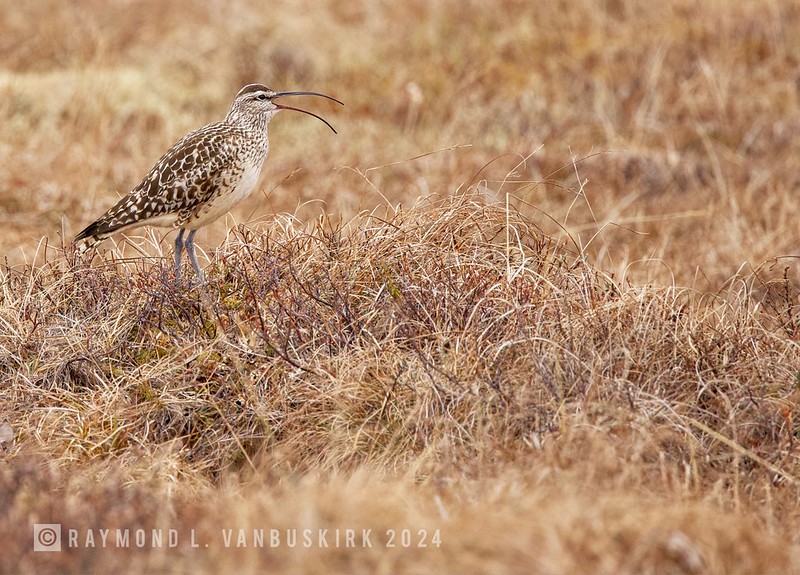
Bristle-thighed Curlew on territory. (Raymond VanBuskirk)
There was much more snow later in the year so the roadsides were lined with snowbanks. These gave perfect perches for close Willow Ptarmigan, the bird of the trip for some.
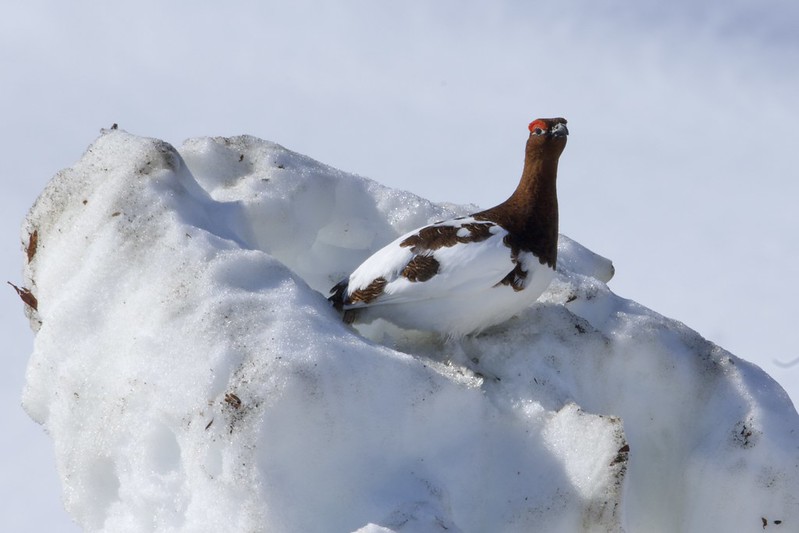
We saw over 100 Willow Ptarmigan in one day. (photo Jake Mohlmann)

Our group at Denali. (photo Raymond VanBuskirk)
The Denali portion kicked off with a bang, when we had an extremely close encounter with a male Spruce Grouse. This was certainly an experience we won’t soon forget.
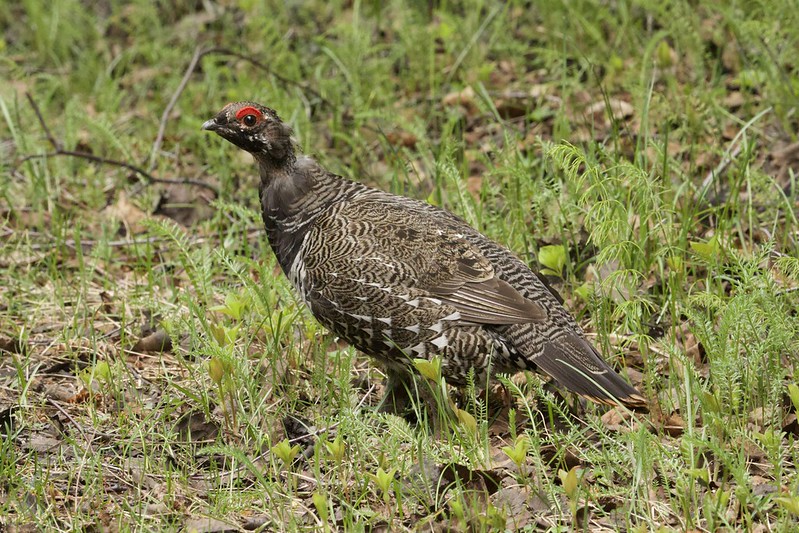
This male Spruce Grouse had no fear. (photo Jake Mohlmann)
We took time to explore the remote tundra along the Old Denali Highway overseen by the endless snow-capped peaks of the Alaska Range. Those that stayed up late got to see an unbelievable sunset over the Maclaren Glacier.

The sun nearly set over the Alaska Range. (photo Raymond VanBuskirk)
The keen eyes of the group found us 2 different Northern Hawk Owls. The second of which had a complete surprise in store. While scoping a perched adult bird, we heard the distinctive calls of some young being emitted from the spruce bog below. We followed the sounds to 3 recently fledged owlets. Another roadside treat was a pair of Bohemian Waxwings that sallied for insects while the group watched in perfect light.
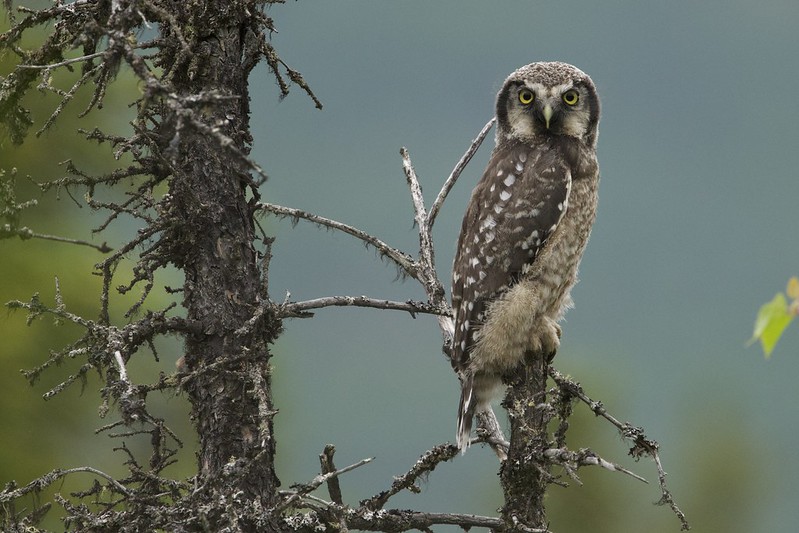
This adorable young Northern Hawk Owl was amazing. (photo Jake Mohlmann)
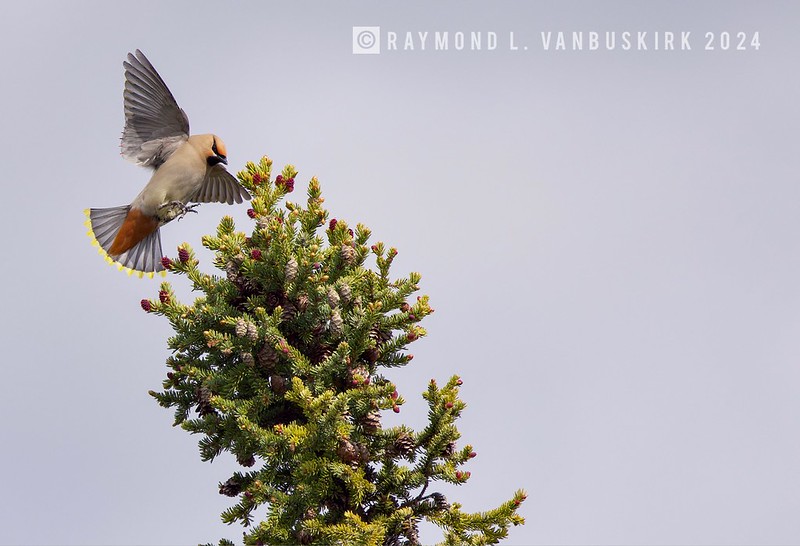
Watching sleek Bohemian Waxwings never gets old. (photo Raymond VanBuskirk)
We had our own charter boat to explore the scenic fjords, fertile inshore waters and breeding bird cliffs of Kenai Fjords National Park. Having the freedom to pursue whatever we wanted from Orcas to Puffins was priceless. At one point the boat gently floated up to a pair of Kittlitz’s Murrelets, a specialty species of these murky glacial waters.
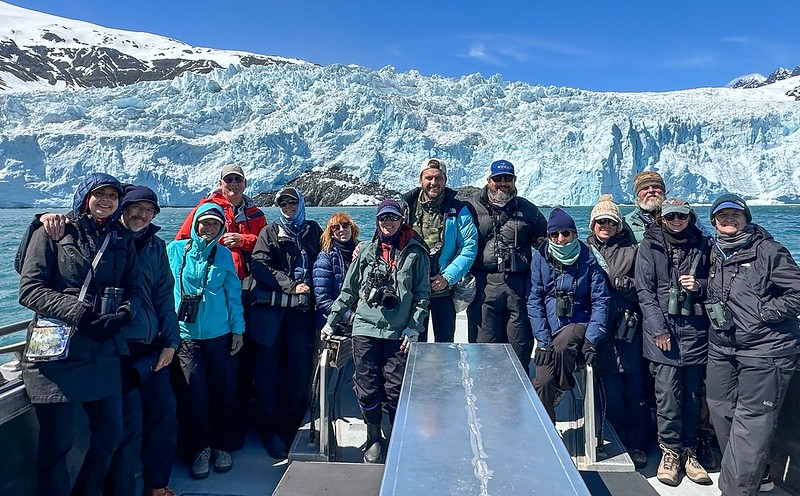
Our ecstatic group in front of the Aialik Glacier. (photo Raymond VanBuskirk)
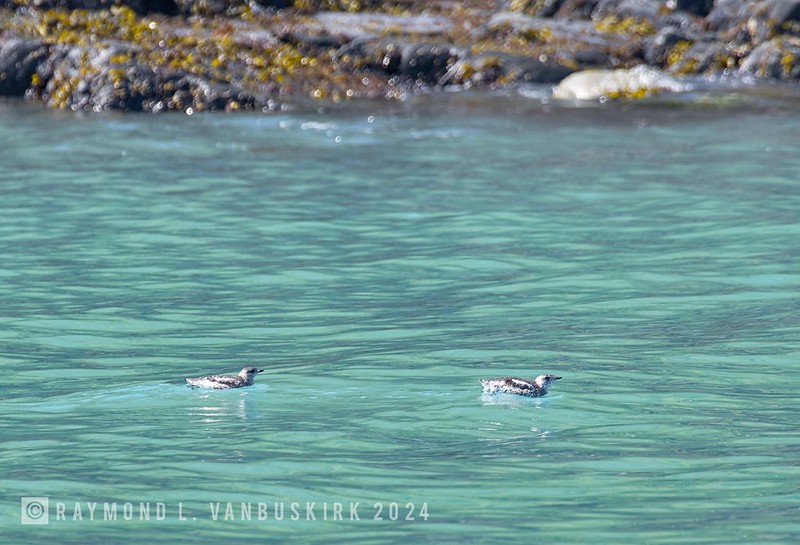
A pair of Kittlitz’s Murrelets near shore. (photo Raymond VanBuskirk)
Barrow was full of birds when we got there, including even more Asian vagrant species. A Common Ringed Plover allowed a close study with thick chest band and lack of any eye-ring. We had a completely unexpected Temmink’s Stint show extremely well. Not only did we see it, but we got to observe it in full breeding display mode fluttering around at eye level.

Slam dunk Common Ringed Plover at Salt Lagoon. (photo Jake Mohlmann)
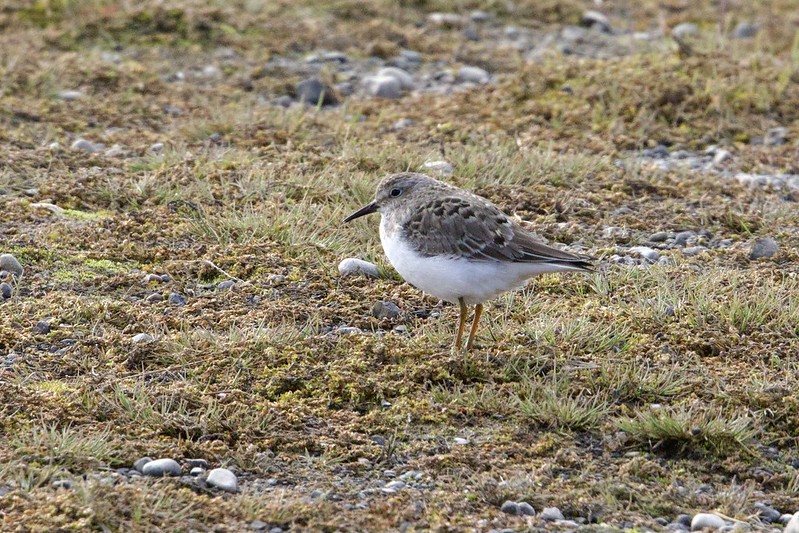
This displaying Temminck’s Stint was fun to watch. (photo Jake Mohlmann)
This is also the place to come and get up close and personal with seabirds on their tundra breeding grounds. We couldn’t have gotten better looks at King, Spectacled and Steller’s Eiders utilizing these small ponds for feeding, resting, and possibly nesting.
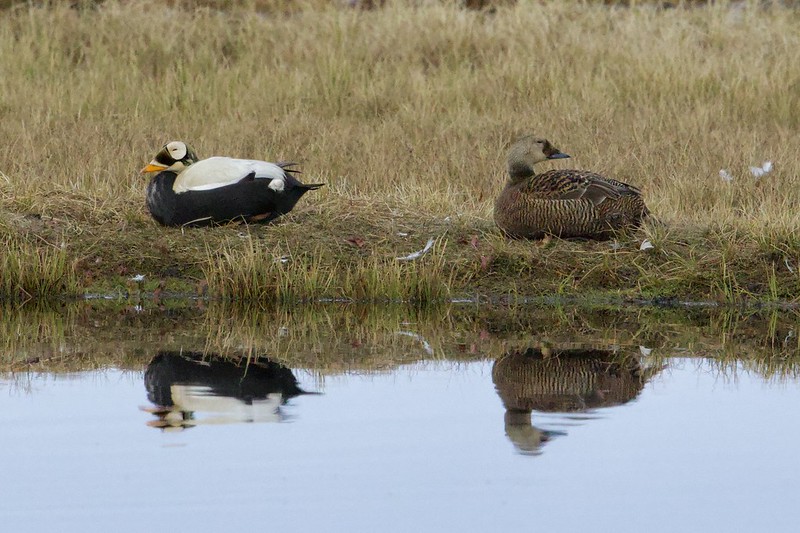
A Spectacled Eider pair rest on the shoreline. (photo Jake Mohlmann)
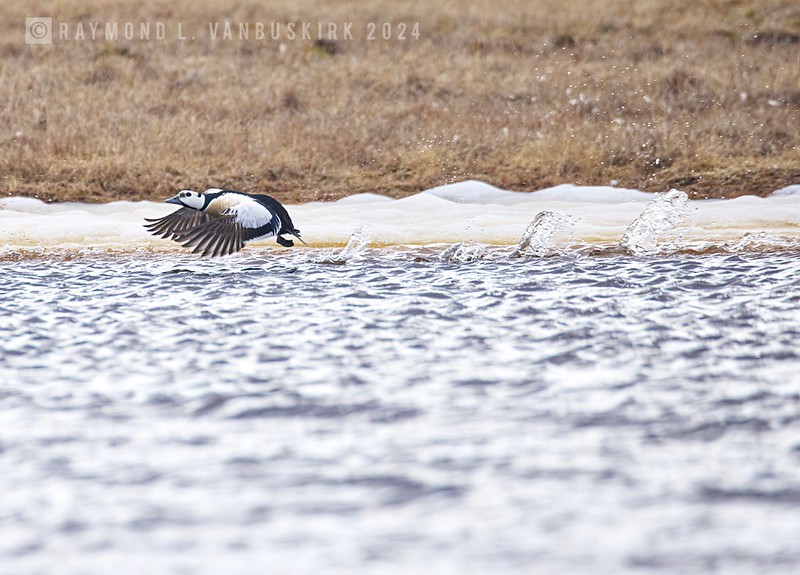
Gorgeous male Steller’s Eider taking flight. (photo Raymond VanBuskirk)
June 17:
Paul French reports from Mongolia
Mongolia is one of the world’s unique places. There are few places where you spend this much time off-road, off-grid and just following your nose when choosing which tracks to follow. It’s a truly special place, where people are scarce and wildlife is everywhere - if you stop and look! Our highlights were many, including Black-billed Capercaillies and Pallas’s Rosefinch in the forests of the north; Kozlov’s Accentor, Oriental Plover, Saxaul Sparrow and Henderson’s Ground Jay in the deserts of the south; Baer’s Pochards, White-naped Cranes, Mongolian Larks, Mongolian Short-toed Lark and Sakers in the steppes and lakes, and finally Güldenstädt’s Redstart, Hodgson’s Bushchat, Altai Snowcock and Asian Rosy-Finch in the central mountains. All this while “glamping” in style with our amazing camp crew and drivers.
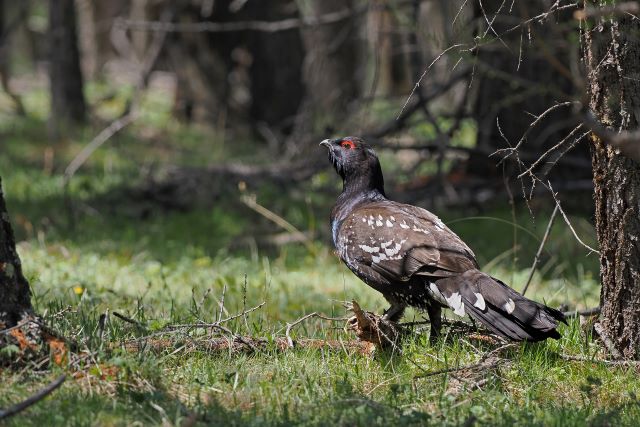
Black-billed Capercaillie
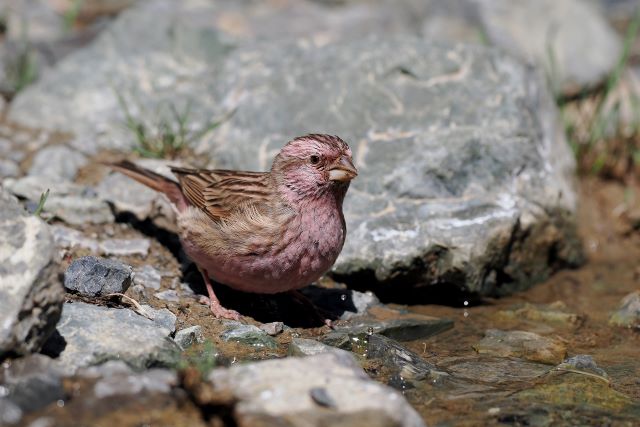
Chinese Beautiful Rosefinch

Demoiselle Crane
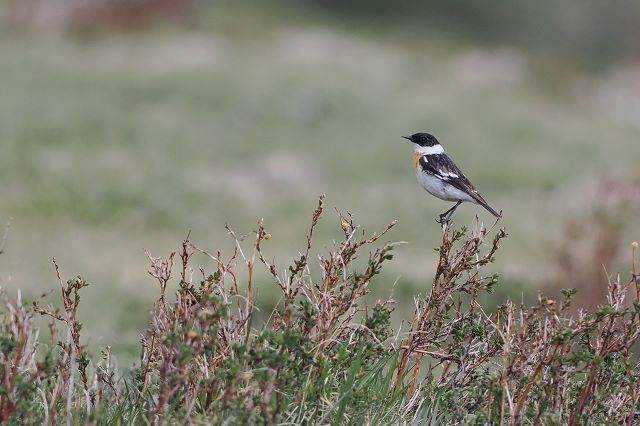
Hodgson's Bushchat
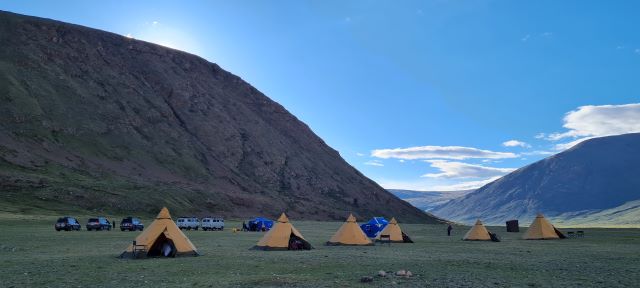
Khukh Nuur

Lammergeier

Oriental Plover
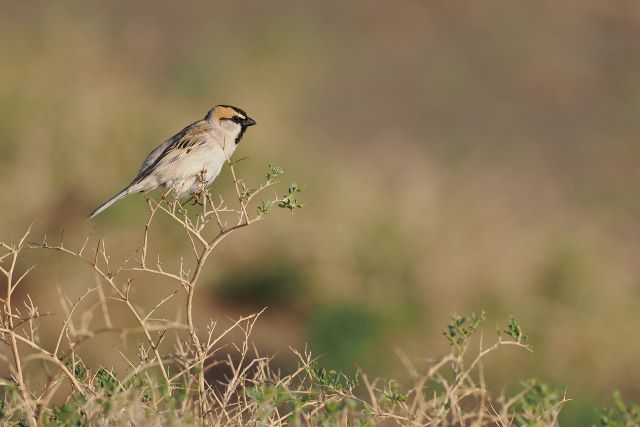
Saxaul Sparrow

The Mongolia 2024 crew
June 10:
Oli Reville reports after a successful Bulgaria in Spring tour
Bird of prey enthusiast looking for a spring vacation? Our 2024 Bulgaria in Spring tour recorded 21 species of birds of prey, from the huge Eurasian Griffon Vulture to the rare Eastern Imperial Eagle. Of course there were plenty of other avian highlights, with Wallcreeper, 8 species of Woodpecker, and rare European species like Sombre Tit, Masked Shrike, Paddyfield Warbler, Olive-tree Warbler, Pygmy Cormorant, Pied and Isabelline Wheatears, Semicollared Flycatcher, and Black-headed Bunting all featuring during the tour.
Our 2025 tour is already online and open for booking: https://wingsbirds.com/tours/bulgaria-spring
Ebird trip report link: https://ebird.org/tripreport/245407
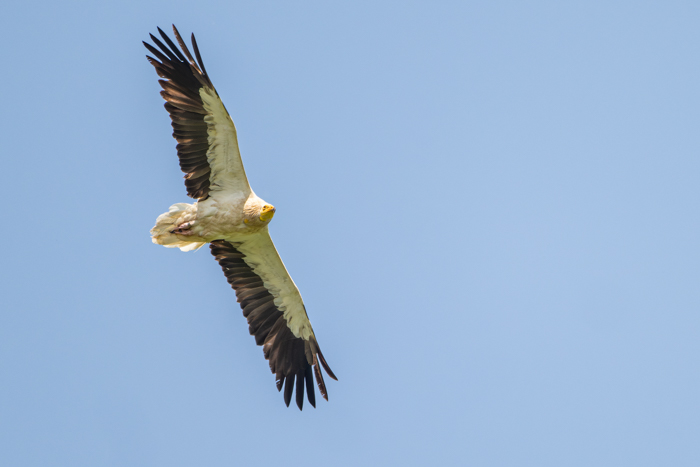
Egyptian Vulture: Egyptian Vulture is one of three vulture species possible on this trip, all rare breeders in Bulgaria
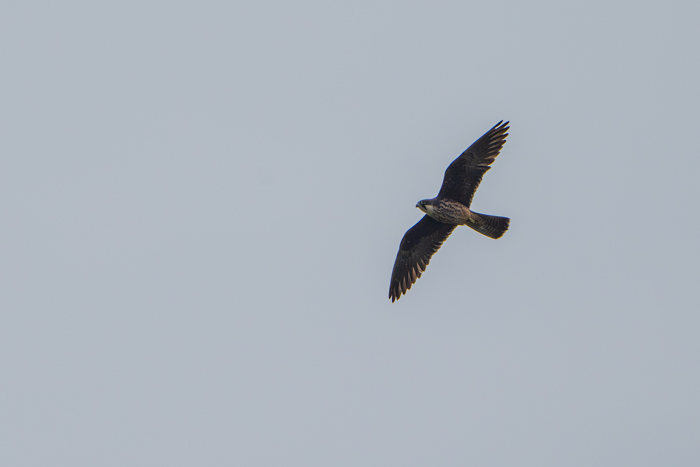
Eleonora's Falcon: A raptor which spends half the year in Madagascar and a rare sighting on our tour

Eurasian Hobby: This rapid dragonfly hunter gave amazing views on the Black Sea coast
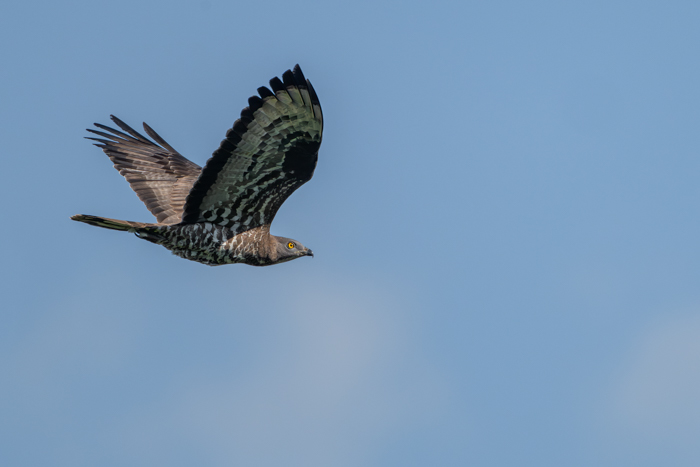
European Honey Buzzard: A long distance migrant and beautiful bird of prey

Griffon Vulture: A giant of the skies above Bulgaria, now doing better than ever in the Rhodope Mountains

Lesser Kestrel: A rare breeding species in the country but with very good views available at their nest site
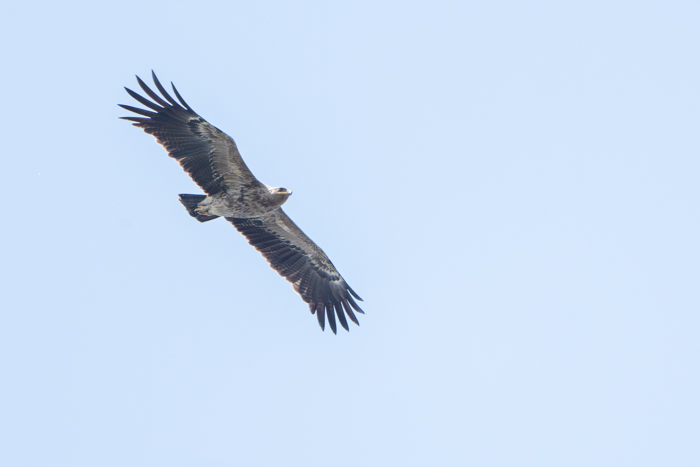
Lesser Spotted Eagle: Another migratory species and seen regularly on our tour
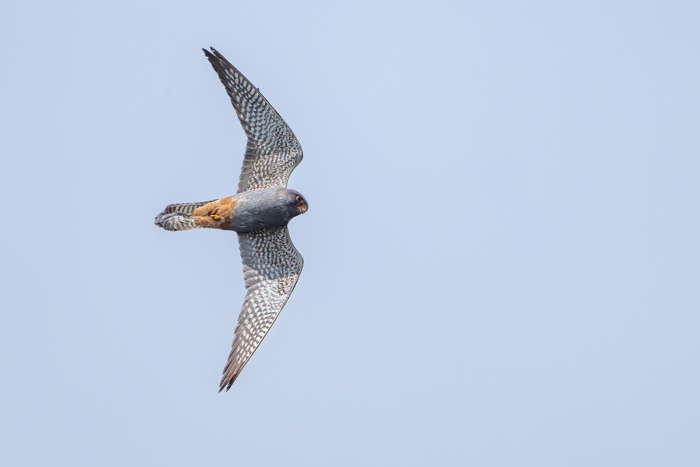
Red-footed Falcon: One of Europe's most beautiful birds of prey

Black Woodpecker: Europe's largest woodpecker and a real experience to watch
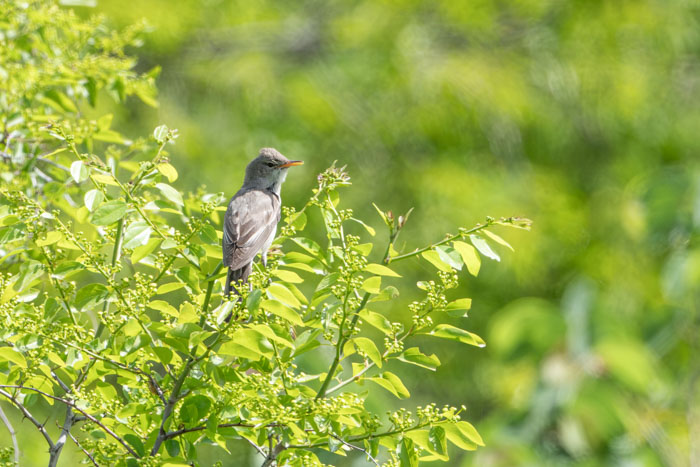
Olive-tree Warbler: Not only found in Olive Trees but a very rare breeding species in Europe
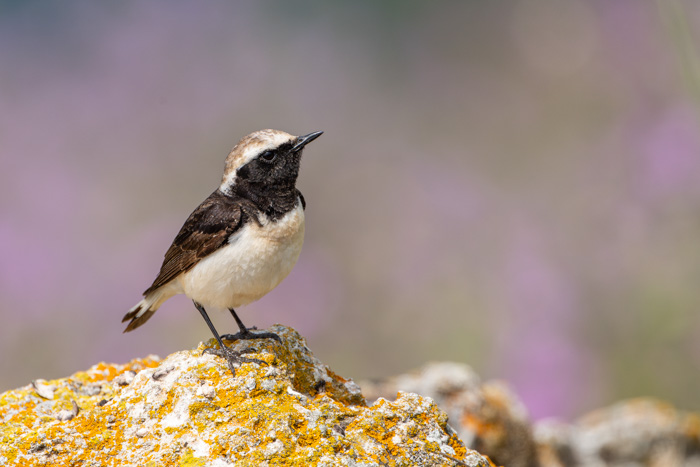
Pied Wheatear: The east coast of Bulgaria is the best place to see this gorgeous species
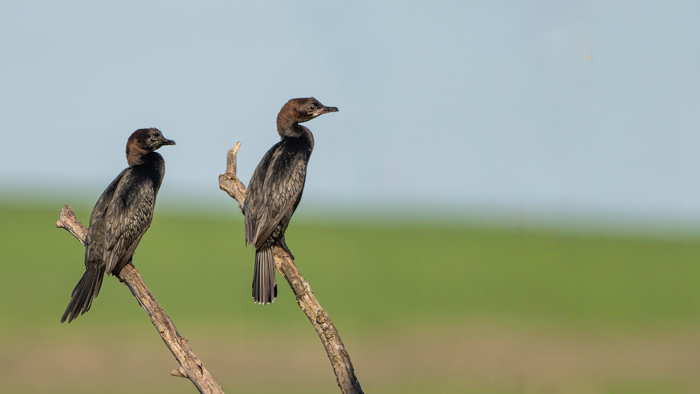
Pygmy Cormorant: A unique looking bird with a very restricted range in southeastern Europe.

Wallcreeper: An iconic species for any birder and the primary highlight of our tour
